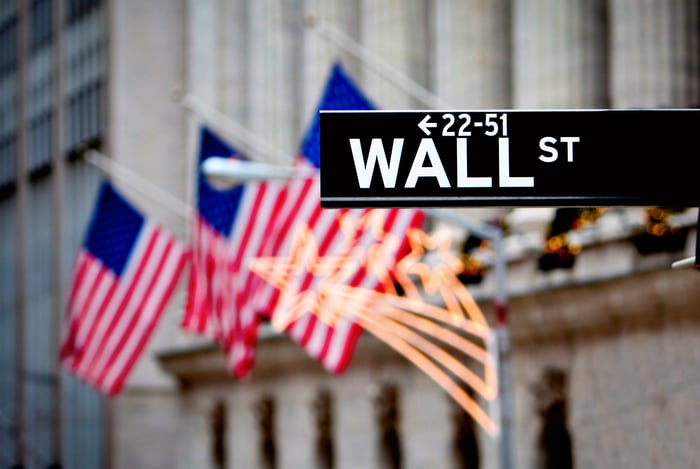When the COVID-19 pandemic struck in early 2020, the U.S. Federal Reserve acted quickly to slash interest rates to a historically low range of between 0% and 0.25%. The federal government also assembled a series of stimulus packages to shield households and businesses from lost income as society ground to a halt.
In a somewhat counterintuitive move (given the circumstances), the benchmark S&P 500 (SNPINDEX: ^GSPC) stock market index soared higher. Low interest rates served as rocket fuel for companies because funding was cheap and plentiful, which meant they could invest heavily in growth.
Thankfully, the measures undertaken by the Fed and the government worked, and the worst of the health and economic emergencies were over by the end of 2021. But that marked the dawn of a new challenge: rising inflation.
The stock market plunged in 2022
There are no free lunches in the world of finance. The consequences of all that cheap money sloshing around the system in 2020 and 2021 came home to roost in 2022, with inflation hitting a 40-year high of 9.1% (on an annualized basis) in June of that year.
The Fed has a mandate to maintain price stability, so it doesn't tolerate high inflation. When the prices of everyday goods and services soar, it can lead to an affordability crisis for consumers, which threatens the health of the broader economy. As a result, the Fed embarked on the most aggressive campaign to hike interest rates in its history.
By the end of 2022, the federal funds rate had risen from a historic low of 0.25% to 4.5%. Investors typically don't like periods of rising interest rates, and this time was no different. The S&P 500 stock market index ended 2022 with a loss of 18.1% (including dividends).

Data source: YCharts.
Rising interest rates can hurt the earnings potential of corporate America, which means investors had to adjust their growth forecasts. That led to lower stock prices last year. Additionally, banks were suddenly offering attractive deposit rates by the end of 2022, and U.S. Treasury bonds were yielding the highest returns in years.
Both of those investments became great risk-free alternatives to more volatile assets like stocks.
The Fed is set to reverse course in 2024
Interest rates continued to tick higher in 2023 although at a much slower pace, and the Federal Funds rate now stands in a range between 5.25% and 5.5%. But according to a Reuters poll from earlier this month, 87% of economists believe the Fed has done its job and won't hike rates any further.
In fact, 58% of the respondents said the central bank will cut rates by the middle of next year. CME Group's FedWatch tool supports that notion. It uses a complex formula to calculate the probability of a move in either direction from the Fed, and it points to three rate cuts in 2024 -- one each in June, September, and December.
Two of Wall Street's largest investment banks, Morgan Stanley and Goldman Sachs, also expect rate cuts next year. J.P. Morgan, on the other hand, recently predicted the Fed could start cutting by the end of 2023 because the economy is slowing at a rapid pace.

Image source: Getty Images.
Here's what it could mean for stocks
Interest rate cuts aren't necessarily something people should be excited about. Sure, they reduce the cost of borrowing -- for both mortgage holders and companies alike -- but the Fed will typically cut interest rates because it sees weakness in the economy. That isn't good news.
But the stock market is a forward-looking machine, so when interest rates begin to fall, investors immediately start pricing the positive impacts that might have in the future.
The below chart displays a good example. The S&P 500 index began to fall at the beginning of 2022, simply because investors were anticipating higher interest rates. Then, as the pace of rate increases slowed in 2023 (signaling the end of the hiking cycle), the index staged a recovery.

Data source: YCharts.
The magnitude of interest rate changes is also important. Despite the Fed hiking interest rates into 2016, it moved at a very slow pace, which didn't disrupt the market until 2018. And, as I mentioned earlier, the rapid drop in rates during the pandemic ignited one of the most aggressive rallies in the S&P 500 in its history.
If interest rates do fall in 2024 as expected, investors will be looking forward to renewed business and consumer spending, which should drive earnings growth. As a result, stocks could have a great year ahead.




